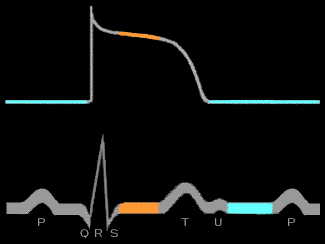
As mentioned earlier, there are normally no voltage gradients in the ventricular myocardial cells when they are at their resting levels (phase 4), the phase represented on the electrocardiogram by the TP segment, or at the plateau level (phase 2), the phase represented by the ST segment. Because of this absence of voltage gradients, the TP and ST segments do not deviate from baseline and are isoelectric with one another. To repeat: IF THERE ARE NO VOLTAGE GRADIENTS, THE ECG WAVEFORM WILL NOT DEVIATE FROM ITS RESTING LEVEL.
